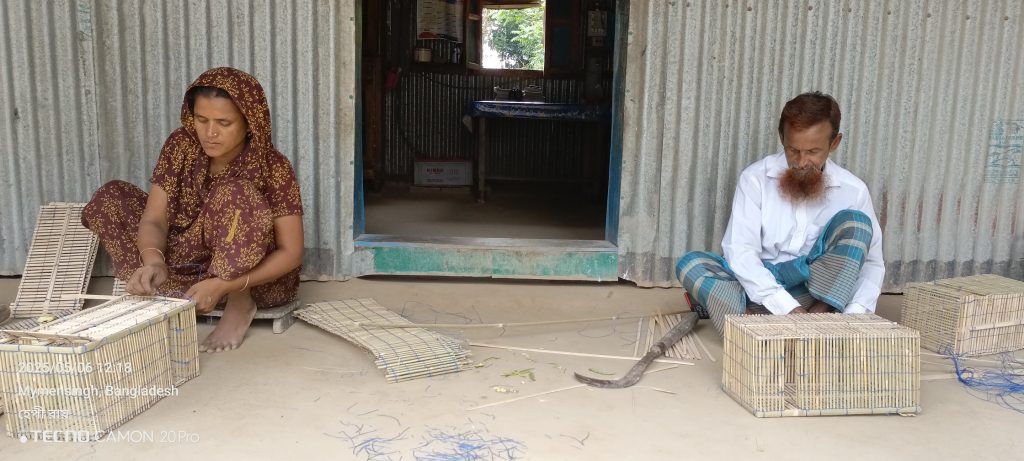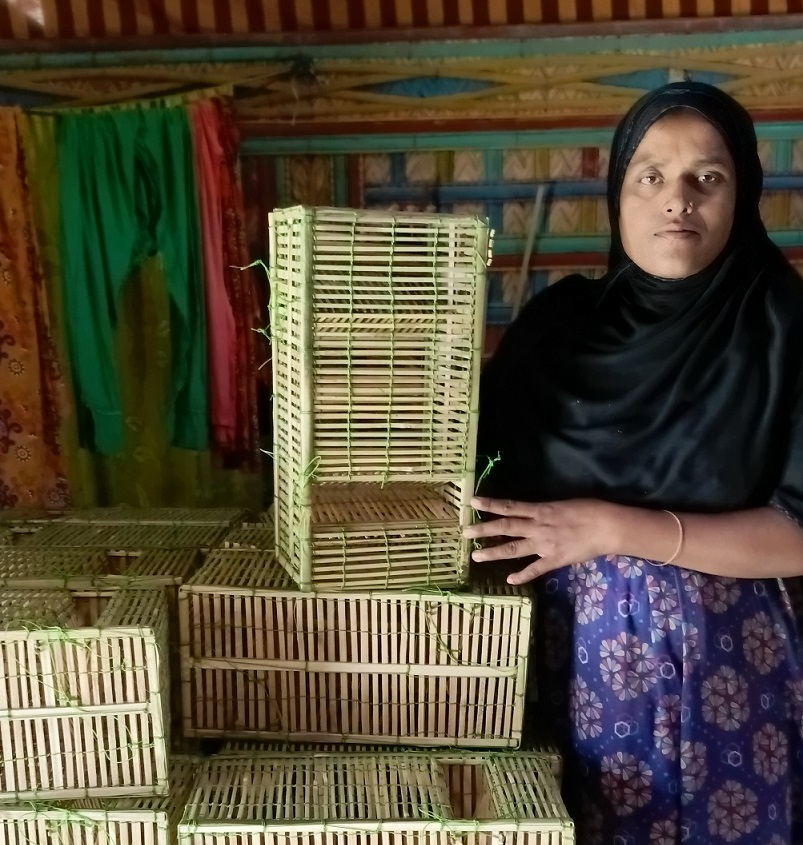By Happy Roy from Netrokona
Shunui Union, situated along the historic banks of the Magra River in Atpara upazila, is a region rich in heritage. Within this union lies the village of Ichhail, located to the northeast of Atpara sub-district. Although the Bishnai River doesn’t run directly beside it, the village must be reached by crossing it. Surrounded by many wetlands and canals such as Dailong, Poddarkhali, Bangra Beel, Dharar Khal, Gaila, Ichakuira, and Hanskuri, Ichhail was once traversed by the mighty Dhaleshwari River, which, over time, has dried up and turned into a footpath.
The village is home to both Hindu and Muslim communities, with most people dependent on agriculture. However, alongside farming, around eight families sustain their livelihoods by crafting and selling ‘Bair’, a traditional local fish trap. These families primarily make ‘Bair’ during the Bengali months of Boishakh to Ashar (April to July), when demand is highest.

During the monsoon, especially in Asharh and Srabon (June–August), when the floodplains overflow, these traps become essential for catching the abundance of small indigenous fish species that emerge with the fresh water. The ‘Bair’ is placed in flowing waters, floodplains, beels, crop field ridges, or water hyacinth jungles where fish such as puti, koi, tengra, chingri (shrimp), kholsha, chanda, boicha, mola, gutum, chikra, kaikya, and kanpona are caught effectively.
With numerous water bodies around the village, there’s no shortage of fish. Initially, a few villagers started making ‘Bair’ just for their own household needs. Gradually, as their quality and utility became evident, demand spread to nearby areas. The trap’s simple operation also adds to its popularity. Half submerged and half floating, the ‘Bair’ is placed in fish pathways, allowing fish to enter through its open end but preventing escape, ensuring a good catch.
Among the villagers, Dulal Miaandhis wife Khaleda Akter stand out as the only family crafting ‘Bair’ year-round, with help from their children. The other seven families engage in it seasonally. Dulal Mia’s ‘Bair’ is particularly has a good demand due to its durability and quality weaving. Wholesalers from Mohanganj, Kalmakanda, Bikrampur, Amtala, and Atpara areas with water bodies that retain water year-round frequently buy these Bair from him.
Though Dulal Mia owns only a small piece of paddy land and also leases land for cultivation. This does not enough to support his six-member family, which includes his elderly mother. Therefore, he has chosen ‘Bair’-making as his primary occupation.
The main materials used for making ‘Bair’ are bamboo and thread. Two bamboos can produce 20 ‘Bairs’, requiring 1 kg of thread. Dulal Mia has no bamboo grove of his own that is why he buys bamboo from others in the village. He is profited from making Bair that helps him to manage family
With the help of four family members, Dulal Mia can make 40 traps a week. His wife balances housework with production, while Dulal and the children spend most of the day crafting. Orders come in via mobile phone from different wholesalers, and the products are picked up directly from their home.
They produce various types of ‘Bair’, including Chyang Bair, Bunda Bair, Tinmuikhya Bair, Guinga Bair, and Kuichcha Bair, with the Tinmuikhya Bair being the most popular due to its versatility in catching all kinds of fish. Dulal Mia is considered the master craftsman of Ichhail village. The other families making ‘Bair’ have learned the craft from him.

The family sells the traps weekly or monthly in batches, and the earnings cover all household expenses children’s education, medicine for the elderly mother, hospitality for guests, and more. With some space in the yard, Khaleda grows seasonal vegetables, and since there’s a pond nearby, raising ducks is easy. The family also keeps chickens and cattle, meeting their protein needs from home.
‘Bair’-making is more than a livelihood, it is an artform, preserved by generations of rural artisans. It supports not just the makers but also those who fish with them and even those who sell bamboo. It is not just a fishing tool actually it is a lifeline for many.
It is to be mentioned that BARCIK has been providing advices and encouraging the occupational groups to retain and revive their traditional occupation supporting them with materials as well as facilitating them to receive access to government resources. Dulal Mia is affiliated with BARCIK participating in different events arranged by BARCIK.
